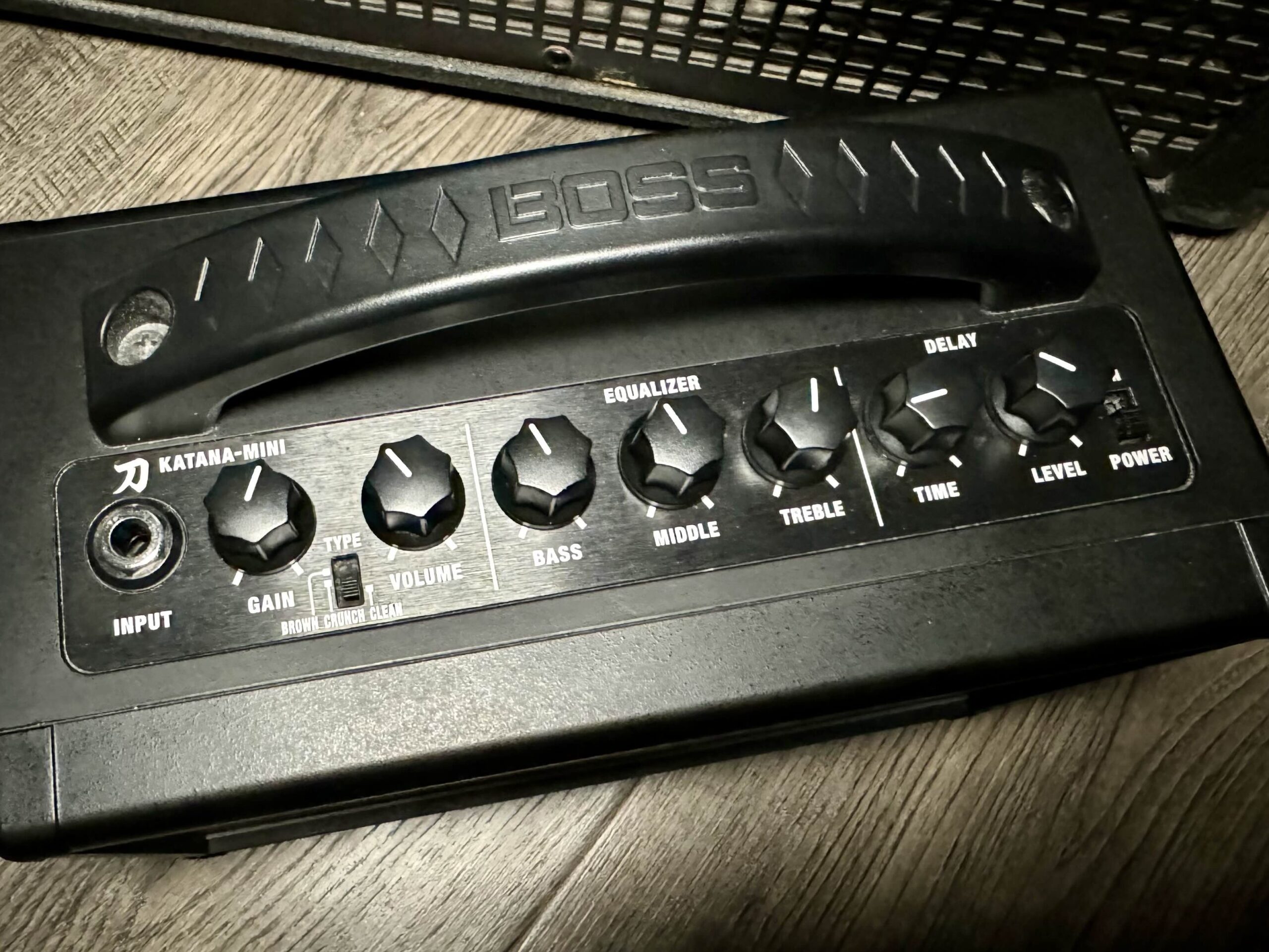***This post contains affiliate links. This means if you make any purchases using the hyperlinks below I may earn a commission, at no cost to you. Thank you for your support!
Hey everyone! Zach with another blog post! I can vividly remember getting my first amp and thinking “What do all these knobs even do?”. Neither my dad or myself knew much about guitars at the time so it ended up that when I received my first bass (which my dad and I made) I also received a guitar amp. Not a bass amp. This ended up not being a huge deal because I barely pushed any sound out of it, being afraid to blow it out. Fast forward a few years and I finally bought my first guitar. College was over and I wasn’t really playing my horns anymore so I started learning guitar. I thought the initial clean sound was so terrible and boring so I immediately started buying pedals. But that’s a story for another time. For now, lets dive into understanding what controls are available to us on most amps!

Introduction
Understanding the guitar amp knob functions is crucial for any guitarist aiming to master their tone. Whether you’re new to guitar amps or looking to refine your sound, knowing what each knob does can significantly improve your playing experience. This guide will break down the essential knobs on your guitar amp and explain how they shape your sound.
Volume Knob
The volume knob controls the overall loudness of your guitar amp. It’s often the first knob you’ll encounter and is crucial for setting your output level. Adjusting this knob doesn’t change your tone but simply makes your sound louder or quieter. When dialing in your volume, consider the environment you’re playing in, whether it’s a small room or a large venue, to ensure your sound is at the right level.
Gain Knob
The gain knob is where things start to get interesting. This control adjusts the amount of signal being pushed through the amp’s preamp stage, affecting the level of distortion. Turning up the gain increases the saturation, leading to a heavier, more distorted sound. For clean tones, keep the gain low, but if you’re after that crunchy, overdriven sound, crank it up. For more information on this and volume, check out this article
EQ Knobs (Bass, Mid, Treble)
The EQ (equalization) section typically includes bass, mid, and treble knobs. These controls allow you to shape the frequency response of your amp:
- Bass: This knob controls the low-end frequencies. Turning it up will give your sound more depth and fullness, ideal for genres like metal or blues.
- Mid: The midrange knob adjusts the middle frequencies, which are crucial for cutting through a mix. Increasing the mids can make your guitar sound more pronounced, while reducing them can create a scooped, hollow tone.
- Treble: The treble knob affects the high-end frequencies. A higher treble setting will add brightness and clarity to your sound, which is great for lead playing or clean tones.
Experimenting with the EQ knobs allows you to tailor your sound to your specific style and preferences.
Reverb Knob
The reverb knob controls the amount of reverberation, or echo, in your sound. Reverb can make your guitar sound like it’s being played in a larger space, adding depth and ambiance to your tone. A small amount of reverb can enhance your sound subtly, while turning it up can create a more spacious, ethereal effect.
Presence Knob
Not all amps have a presence knob, but if yours does, it’s an important tool for fine-tuning your high-end frequencies. The presence knob works similarly to the treble control but affects a different part of the frequency spectrum. Increasing the presence can make your sound more aggressive and cutting, perfect for lead parts that need to stand out.
Master Volume Knob
The master volume knob is often confused with the standard volume knob, but they serve different purposes. The master volume controls the overall output after the preamp stage, allowing you to crank the gain for a distorted sound without increasing the loudness too much. This is particularly useful in settings where you want that heavy distortion at a manageable volume level.
Channel Selector Knob
Many amps have multiple channels, such as clean and overdrive, which can be toggled using the channel selector knob. Each channel has its own set of EQ and volume controls, allowing you to switch between different tones on the fly. This feature is especially useful in live performances, where you might need to alternate between a clean rhythm sound and a distorted lead tone quickly.
Effects Knob
Some amps come with built-in effects like chorus, delay, or flanger, controlled by the effects knob. This knob allows you to blend in these effects with your dry signal. Adjusting this control can add texture and complexity to your sound, opening up a world of tonal possibilities.
Conclusion
Knowing the guitar amp knob functions is key to unlocking your amp’s full potential. Each knob plays a specific role in shaping your sound, from the basics of volume and gain to the fine-tuning of EQ and effects. By understanding what each control does, you can craft the perfect tone for any musical situation. So, next time you’re at your amp, take a moment to experiment with these settings and discover the full range of sounds your amp has to offer.
All these years later I have since purchased a Boss Katana Amp and the Boss Katana Mini (you can see my review of the Mini here) I haven’t done a review of the 50 watt version but its truly an incredible piece of gear that I cannot recommend enough! Tons of options and controls to dial in your sound and its perfect for gigging. Anyway, I hope this was helpful!

